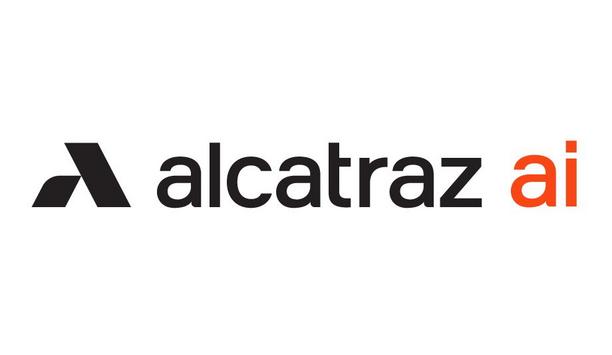Integrators need to be well versed in Total Cost of Ownership (TCO), when discussing video surveillance options with their customers. Business leaders are looking for the best, most economical technology that will address their security needs, and they also want to avoid being blind-sided by unplanned technology operations and service costs.
While most folks understand that the initial cost of a video surveillance system is not the same as the total cost of ownership, many might be surprised to learn that the costs to operate and maintain video surveillance system on-premises technology is often double and sometimes even quadruple the original purchase price, particularly when IT servers are involved.
TCO landscape changed with advent of cloud systems
Fortunately, the TCO landscape has changed with the advent of cloud systems
Fortunately, the TCO landscape has changed with the advent of cloud systems. What has changed? To begin with, there are certain characteristics built into true cloud systems that offer tremendous economies of scale and save the customer money.
The three examples described below are also outlined in the National Institute of Standards and Technology (NIST) Definition of Cloud Computing:
- Resource pooling - This is a term that describes how businesses, who are cloud system subscribers, all share the significant cost savings from equipment purchases and servicing at large scale. Cloud system subscribers all receive high-power and high-capacity computing at a much lower cost than would ever be possible with an on-premise system.
- Rapid elasticity - This is the cloud-computing term for the ability to provide scalable services. Rapid elasticity ensures that each cloud system subscriber is always using only and exactly the high-performance computing resources needed. This is a much different situation than an on-premises system, which must be sized and continually powered to satisfy occasional peak system usage.
- Measured service - Each subscriber’s account only uses and pays for the resources allotted by subscription. This ensures predictable data center costs and reasonable subscription pricing.
True cloud offers high system reliability, strong cyber security
Additionally, true cloud offers high system reliability, wide-area internet-based remote access and strong cyber security that surpasses what is feasible for on-premises deployments.
When you compare all the costs to own and operate video management systems (VMS), as opposed to using purchase price alone, the TCO of a true cloud system is considerably below that of a typical on-site system. The savings vary, but generally safe ranges are:
- Small business: 5% to 15%
- Multi-site retail operation: 25% to 40%
- Large commercial business: 15% to 25%
Classic TCO Cost Categories
Let’s take a look at the classic TCO cost categories for physical security systems. The chart in Figure 1 shows eight categories, whose relative sizes vary depending upon type and configuration of the project.
 |
| Figure 1 - The classic TCO cost categories for physical security systems |
For small single-site deployments, calculating TCO is simple. For multi-site, large commercial, and enterprise deployments it is more complex. With multi-site deployments, these costs are typically grouped with other costs across a variety of budgets and are typically difficult if not impossible to accurately predict or track.
Cost of server and network installation
The cost of server and network installation, maintenance and repair will be about the same for any VMS
However, for video surveillance systems, even if a security manager wanted to calculate the TCO, what benefit would there be? The competitive part of a commercial video surveillance system is not the server and network infrastructure, which is often provided or specified by the organisation’s IT department and is substantially the same, regardless of the brand of video management system (VMS) software.
The cost of server and network installation, maintenance and repair will be about the same for any VMS. Only the software purchase price and ongoing licence fees will make a competitive difference, right? In the past, that was generally true. However, with a cloud video system, this is no longer the case.
Cloud reduces Video Management System TCO
A well-engineered true cloud VMS includes capabilities that are typically not affordable in on-premises systems. For example, a true cloud VMS offers server and data redundancy, high bandwidth wide-area network infrastructure, and very strong cyber security, all of which would require a very significant investment in a non-cloud system.
A cloud-based VMS makes these affordable due to the large economies of scale in the flexible computing, data storage and wide-area networking resources of a cloud data centre and the internet.
Cloud-based system offer data redundancy and cyber security
Notice that, in the TCO calculation examples that follow, the cloud-based system contains data redundancy and cyber security measures that on-premise systems simply do not offer. Other benefits include:
- Hot redundant computing
- Geographically desirable video storage locations
- Information security audits
- Continuous penetration testing
- Continuous feature delivery
- Automatically applied application security updates
Backups are current, encrypted and verified
In a true-cloud VMS, backups are kept current, encrypted and are verified
In a true-cloud VMS, backups are kept current, encrypted and are verified, and cyber security controls are tested, as part of normal cloud operations.
Another cost-lowering element is intelligent bandwidth management with local on-premises buffering, typically allowing existing business internet connections to be utilised for uploading video to the cloud VMS, incurring no additional internet bandwidth costs.
Video-optimised data centre technology
Furthermore, TCO is even better from a cloud company that designs and builds its own public or private cloud, using hardware and software optimised for video applications, in order to maximise system performance and reliability, and minimise costs. VMS software that is built using public cloud providers’ services, are built for a wider variety of application types, and offer fewer system optimising options.
Furthermore, margin-stacking occurs because the public cloud’s profit margin on its computing, networking and storage services are then resold by the cloud VMS provider. That means subscribers now pay for two profit margins on the VMS platform’s supporting infrastructure.
TCO Comparison – True Cloud vs. On-site NVR Enterprise System
 |
 |
| Figure 2 - TCO Calculations for True Cloud Enterprise VMS |
 |
 |
| Figure 3 - TCO Calculations for On-Site NVR Enterprise System |
Deployment TCO Comparison
As Figures 2 and 3 above show, a 5-year cost TCO comparison between a True Cloud VMS and an On-Site NVR Enterprise System shows a 35% savings for the True Cloud VMS.
- On-Site NVR Enterprise System: US$ 1,138,255
- True Cloud VMS: US$ 741,470
- TCO Diff: US$ 396,785
- Savings: 35%
However, in addition to the cost savings, there are several critical information security elements included in the True Cloud VMS that can’t be feasibly achieved in the On-Site NVR Enterprise System (Figure 3, items 5b, 5c and 6c). Thus, the True Cloud Deployment is without question the better value.
Cloud System TCO Wins
The above TCO comparison underscores the typical advantages of cloud-based over premises-based video management systems. The hard and soft benefits are clear:
- Lower TCO. Lower total cost of ownership.
- Lower Up-Front Costs. Lower up-front expenditure costs.
- No Margin Stacking. TCO is even better from a cloud company that designs and builds its own data center technology, eliminating vendor margin-stacking.
- Full Hot Redundancy. Data storage and video recording and processing are fully redundant.
- Cyber security. Strong cyber security including data encryption in transit and at rest.
- Mobile Performance. Better wide-area mobile device performance.
- Automatic Updates - Automatic security and feature updates with no action needed by the service provider.
- Only Pay for What You Use - Cloud customers can add and subtract video analytics and other system capabilities on demand, paying only for the period in which they use them.
- Instantly Adjustable Video Retention - Cloud customers can expand video retention and recording resolution and frame rate on a per-camera basis, without having to make any on-premises infrastructure changes.
- No Refresh Cost Bump - There is no server refresh cost bump, typically required with on-premises systems for: (a) upgrading outdated server computers for increased processor power and memory, to meet new software requirements; and (b) replacing hard drives nearing their failure point.
- No Downtime and Accelerated New Features - True cloud systems remain current through continuous delivery software engineering, incrementally improving software in intervals of weeks, rather than months or years. Security/bug-fix updates and version upgrade downtime are eliminated as are staff learning curves.
Cloud has changed the TCO landscape
Cloud has changed the TCO landscape, and this offers integrators a great opportunity to demonstrate to their customers how security systems costs can be easily measured and predictable. Customers appreciate when the cost (subscription price) is in plain sight.
Business leaders appreciate understanding the bottom line—which is that the TCO for a True Cloud VMS system, when correctly calculated to include on-premises VMS equipment refreshes, will typically cost less than an on-premises VMS – while providing greater value.








